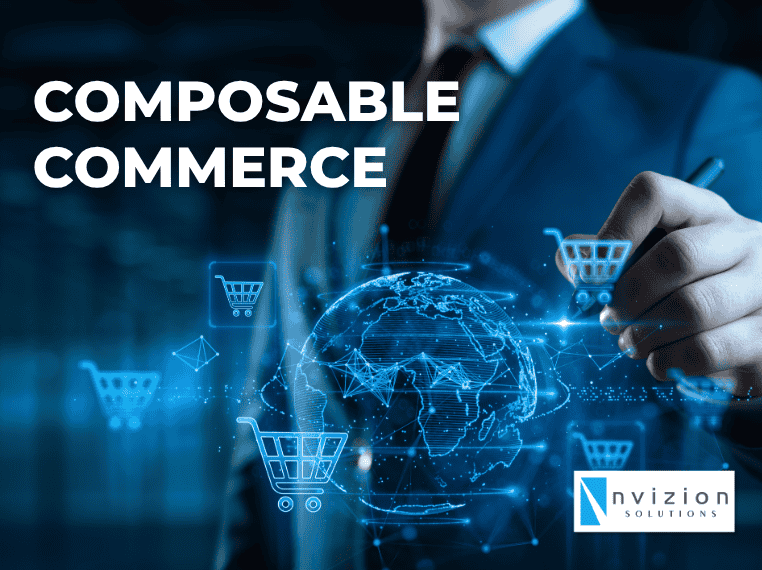What is Composable Commerce?

What is Composable Commerce? A Guide to Building Flexible E-Commerce Platforms
Composable commerce is a disruptive approach to building and managing modern commerce platforms. It empowers companies to create custom online stores that are scalable, adaptable to market changes, and capable of growing by integrating best-of-breed solutions.
Overview of Composable Commerce
Composable commerce allows businesses to adopt a modular strategy. Instead of relying on a traditional, monolithic system where everything is bundled into a single block, companies can now choose and connect individual services such as payment gateways, content management systems, or checkout modules using APIs. This eliminates vendor lock-in while enabling organizations to innovate more freely and improve customer satisfaction.
Key Benefits of Composable Commerce
Flexibility:
Businesses can differentiate themselves by combining unique capabilities across various operations. This flexibility enables them to integrate value-driven services from reliable sources, resulting in a more personalized and competitive offering.
Scalability:
Composable commerce allows businesses to scale efficiently. As demand increases, modular components can be added or adjusted without overhauling the entire system. This adaptability helps maintain performance and supports expansion across different markets and customer segments.
Speed to Market:
With pre-built modules and plug-and-play capabilities, businesses can bring new features or services to market faster. Changes can be implemented quickly, which reduces development time and allows for faster testing and deployment. This agile approach supports continuous innovation and responsiveness to customer needs.
Improved Customer Experience:
Composable commerce supports customized and seamless shopping experiences. Brands can offer features tailored to their audience, such as personalized recommendations, quick checkouts, or consistent functionality across devices. By using only the components that matter most to their users, businesses can create more engaging and memorable interactions that build loyalty and increase conversions.
Elements of a Composable Commerce Architecture
A composable commerce architecture uses modular, systemized, and API-enabled components. Key elements include:
• Headless CMS: Manages content separately from the front end, allowing for seamless presentation across multiple channels.
• Commerce Engine: Handles core digital commerce functions such as product information management (PIM), cataloguing, pricing, and inventory control.
• Payment Gateways: Payment solutions like Stripe or PayPal can be securely integrated into the system.
• Search and Merchandising: Tools like Alogia use algorithms to enhance customer engagement with relevant content.
• Customer Data Platforms (CDPs): Collect data from various sources to support targeted marketing, segmentation, and business intelligence reporting.
All components connect through APIs, enabling full integration and nearly limitless customization and adaptability.
Comparison Between Headless and Composable Commerce
Although often confused, headless commerce and composable commerce are not the same.
Headless commerce separates the front-end user interface from the back-end functionality. This allows greater flexibility in how content is presented across different channels.
Composable commerce builds on this idea by using interchangeable, modular components instead of fixed back-end systems. It breaks the back end into smaller parts that can be independently developed, deployed, and managed. While headless commerce focuses on decoupling the presentation layer, composable commerce focuses on creating a flexible, dynamic ecosystem where each module can be selected, updated, or replaced based on specific business needs.
In essence, headless commerce is a subset of composable commerce. The latter extends flexibility even further by supporting full customization, omnichannel strategies, and ongoing evolution of your tech stack.
How to Implement Composable Commerce for Your Business
Implementing composable commerce requires a strategic approach:
- Assess Business Needs: Identify your goals, such as improving site speed or enhancing personalization.
- Choose the Right Tools: Select best-in-class solutions for each component, ensuring they align with your objectives.
- Leverage APIs: Use API-first platforms to integrate components seamlessly.
- Work with Experts: Partner with developers or agencies experienced in composable architectures.
- Test and Iterate: Launch a pilot, gather feedback, and refine the system for optimal performance.
A well-planned implementation ensures your platform is both robust and adaptable.
Challenges and Considerations
Despite its advantages, composable commerce comes with challenges:
- Complexity: Managing multiple vendors and integrations requires technical expertise.
- Initial Costs: Building a custom system may involve higher upfront costs than traditional platforms.
- Maintenance: Ongoing updates and compatibility checks are necessary to keep components aligned.
- Skill Gaps: Teams may need training to manage modular systems effectively.
Careful planning and resource allocation can mitigate these challenges, ensuring a smooth transition.
Future Trends in Composable Commerce
Composable commerce is poised to shape the future of modern commerce. Emerging trends include:
- AI Integration: AI-driven personalization and predictive analytics will enhance customer experiences.
- Microservices Growth: Smaller, specialized services will dominate, offering even more flexibility.
- Omnichannel Expansion: Composable platforms will support seamless experiences across web, mobile, and in-store.
- Sustainability Focus: Businesses will prioritize eco-friendly tools and practices within their composable setups.
Staying ahead of these trends can position your business as a leader in the modern-commerce space.
Conclusion
Composable commerce empowers businesses to build flexible, scalable, and customer-focused digital-commerce platforms. By selecting best-in-class components and leveraging APIs, companies can create tailored solutions that adapt to changing market demands. While challenges exist, the benefits of agility, scalability, and enhanced customer experiences make composable commerce a game-changer for modern businesses. Start exploring this approach to future-proof your modern commerce strategy.
FAQs
How long does it take to implement composable commerce?
Implementation timelines vary based on complexity, but a basic setup can take 3 to 6 months, while larger projects may require 6 to 12 months.
What’s the biggest challenge with composable commerce?
The hardest part is trying to manage complexity. Because you are putting together different tools and systems, you need to have some strong technical ability to make sure everything is working together and continues to run.
How much does composable commerce cost?
There is not one answer to this question. Pricing will vary based on what tools you choose and how many tools you are using. While it is typically priced higher than traditional platforms at first, the long-term value is flexibility, better performance and lower maintenance fees.
Who is composable commerce right for?
It is for businesses looking to grow faster, provide a unique customer experience, and/or companies wanting to stay ahead of what is being used in the market. Examples include fast growing retailers, large companies with complex infrastructure needs, and brands wanting total control of what technology they are using.
What does “composable” mean?
"Composable" means you can 'pick the parts' you are looking for like building blocks, to create a system that works just the way you want it, focusing on flexibility and customization.
At Nvizion Solutions, we help businesses design, build, and manage composable commerce ecosystems that are tailored to their unique goals. From selecting the right tools to seamless implementation and long-term support, we ensure your composable setup is scalable, flexible, and future-ready.
Faq
Insights
Looking for resources, tools, tips and industry news? Stay ahead of the curve with quick access to thought leadership and expert insights on digital transformation.
